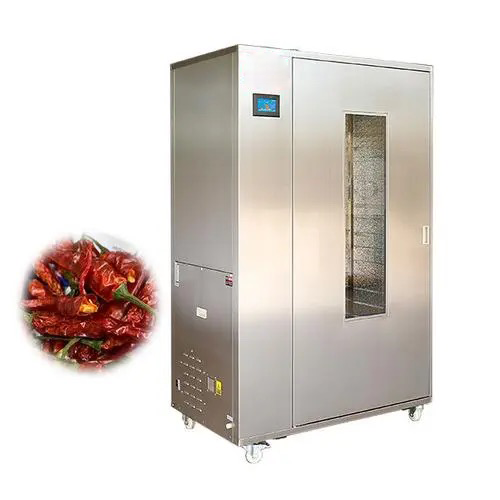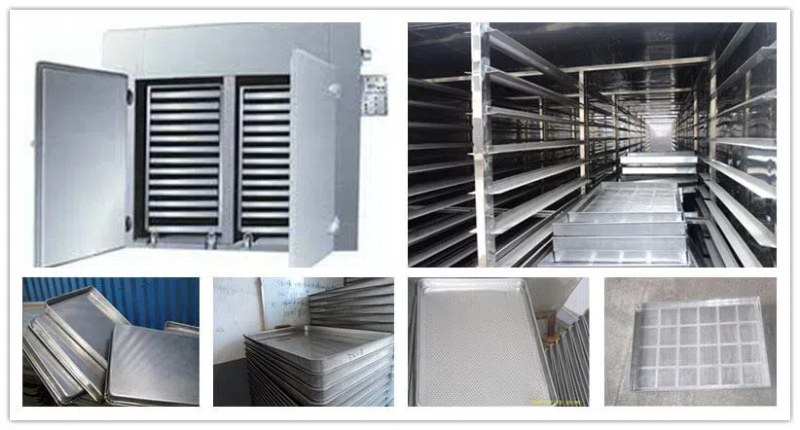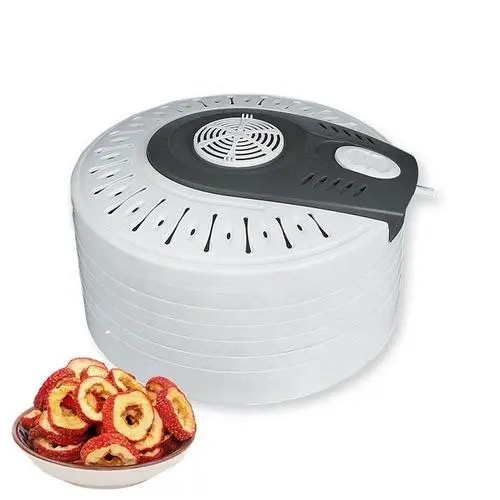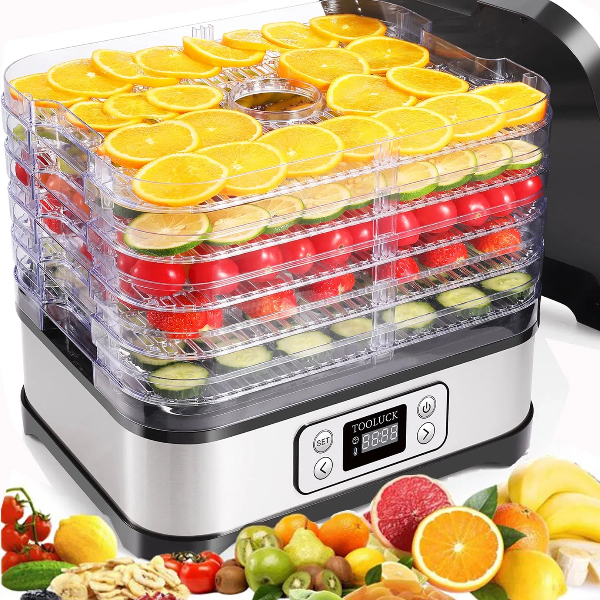
Content Menu
● Introduction to Food Drying Machines
● Understanding the Food Drying Process
● Types of Food Drying Machines Available in the UK
>> 1. Home Food Dehydrator
>> 2. Commercial Food Dehydrator
>> 3. Stainless Steel Food Dehydrator
>> 4. Multi-tray Food Dryer
● Benefits of Using a Food Drying Machine
>> 1. Preserves Nutritional Value
>> 2. Extends Shelf Life
>> 3. Concentrates Flavors
>> 4. Space-Saving Food Storage
>> 5. Versatility in Food Preparation
● Choosing the Right Food Drying Machine for Your Needs
>> 1. Capacity
>> 2. Temperature Control
>> 3. Air Flow Design
>> 4. Noise Level
>> 5. Energy Efficiency
● Popular Food Items to Dry
>> 1. Fruits
>> 2. Vegetables
>> 3. Herbs
>> 4. Meats
● Tips for Successful Food Drying
● Maintenance and Care of Your Food Drying Machine
● The Future of Food Drying Technology
● Conclusion
● Frequently Asked Questions
>> 1. What is the best temperature for drying fruits in a food dehydrator?
>> 2. How long does it take to dry food in a dehydrator?
>> 3. Can I use a food drying machine to make pet treats?
>> 4. How do I know when my food is sufficiently dried?
>> 5. Are food drying machines energy-efficient?
Introduction to Food Drying Machines
In recent years, the popularity of food drying machines, also known as food dehydrators, has skyrocketed in the UK. These innovative appliances have revolutionized the way we preserve food, offering a convenient and efficient method to extend the shelf life of various fruits, vegetables, meats, and herbs. Whether you're a health-conscious individual looking to create nutritious snacks or a gardener wanting to preserve your bountiful harvest, a food drying machine can be an invaluable addition to your kitchen arsenal.
Understanding the Food Drying Process
Food drying, or dehydration, is an ancient preservation technique that has been modernized with the advent of electric food dehydrators. The process involves removing moisture from food items, which inhibits the growth of bacteria, yeasts, and molds. This not only extends the shelf life of foods but also concentrates their flavors and preserves many of their nutritional benefits.
A typical food drying machine UK households use consists of several key components:
1. Heating element
2. Fan for air circulation
3. Adjustable thermostat
4. Multiple trays for food placement
5. Vents for moisture release
These elements work in harmony to create an environment that efficiently removes moisture from foods while maintaining their nutritional integrity.

Types of Food Drying Machines Available in the UK
The UK market offers a diverse range of food drying machines to suit various needs and preferences. Let's explore some of the most popular types:
1. Home Food Dehydrator
Designed for domestic use, home food dehydrators are compact, user-friendly, and perfect for small to medium-sized batches. These machines typically feature multiple trays and adjustable temperature controls, allowing users to dry a variety of foods simultaneously.
2. Commercial Food Dehydrator
For businesses or individuals requiring larger capacities, commercial food dehydrators offer enhanced performance and durability. These machines are built to handle high volumes and often come with advanced features such as digital controls and multiple fan speeds.
3. Stainless Steel Food Dehydrator
Stainless steel models are prized for their durability, ease of cleaning, and sleek appearance. They are resistant to corrosion and can withstand frequent use, making them a popular choice for both home and commercial settings.
4. Multi-tray Food Dryer
These versatile machines come with multiple trays, allowing users to dry different types of foods simultaneously. The ability to add or remove trays provides flexibility in terms of capacity and energy efficiency.
Benefits of Using a Food Drying Machine
Investing in a food drying machine UK consumers trust can offer numerous advantages:
1. Preserves Nutritional Value
Unlike some preservation methods that can degrade nutrients, food dehydration retains much of the original nutritional content of fruits, vegetables, and meats. This makes dried foods an excellent source of vitamins, minerals, and fiber.
2. Extends Shelf Life
By removing moisture, food drying machines significantly extend the shelf life of various foods. Properly dried and stored items can last for months or even years, reducing food waste and saving money in the long run.
3. Concentrates Flavors
Dehydration concentrates the natural flavors of foods, resulting in intensely flavorful dried fruits, vegetables, and herbs. This makes them perfect for snacking or as ingredients in various recipes.
4. Space-Saving Food Storage
Dried foods take up significantly less space than their fresh counterparts, making them ideal for those with limited storage capacity. This is particularly beneficial for preserving large harvests or bulk purchases.
5. Versatility in Food Preparation
A food drying machine opens up a world of culinary possibilities. From creating homemade fruit leathers and vegetable chips to preparing jerky and dried herbs, the options are virtually endless.

Choosing the Right Food Drying Machine for Your Needs
When selecting a food drying machine in the UK, consider the following factors:
1. Capacity
Determine how much food you plan to dry regularly. Home users might find a 5-7 tray dehydrator sufficient, while those with larger needs may opt for a commercial-grade machine with 10 or more trays.
2. Temperature Control
Look for a machine with adjustable temperature settings. Different foods require varying drying temperatures, so this feature ensures optimal results across a range of items.
3. Air Flow Design
Efficient air circulation is crucial for even drying. Some models feature horizontal air flow, which is generally more effective than vertical flow systems.
4. Noise Level
Consider the noise output, especially if you plan to run the dehydrator for extended periods. Some models are designed to operate quietly, which can be a significant advantage.
5. Energy Efficiency
Check the power consumption of the machine. Energy-efficient models may cost more upfront but can lead to savings on electricity bills in the long run.
Popular Food Items to Dry
A food drying machine UK enthusiasts love can be used to dehydrate a wide variety of foods:
1. Fruits
Apples, bananas, berries, mangoes, and pineapples are excellent choices for drying. They make delicious, healthy snacks and can be rehydrated for use in baking or cooking.
2. Vegetables
Carrots, bell peppers, onions, and tomatoes dry well and can be used in soups, stews, or as flavorful additions to various dishes.
3. Herbs
Drying herbs like basil, oregano, and thyme preserves their flavors and extends their usability. Dried herbs are perfect for seasoning dishes year-round.
4. Meats
Creating homemade jerky from beef, turkey, or game meats is a popular use for food dehydrators. It's a great way to make protein-rich snacks with controlled ingredients.
Tips for Successful Food Drying
To get the most out of your food drying machine, keep these tips in mind:
1. Prepare foods uniformly: Cut fruits and vegetables into even-sized pieces to ensure consistent drying.
2. Pre-treat fruits: Dipping sliced fruits in lemon juice or ascorbic acid solution can help prevent browning.
3. Rotate trays: For even drying, rotate the trays periodically during the dehydration process.
4. Allow proper air circulation: Avoid overcrowding the trays to ensure adequate air flow around each food item.
5. Store dried foods properly: Use airtight containers and store in a cool, dark place to maintain quality.
Maintenance and Care of Your Food Drying Machine
Proper maintenance of your food drying machine ensures its longevity and optimal performance:
1. Clean trays and components after each use with warm, soapy water.
2. Wipe down the interior of the machine regularly to prevent buildup.
3. Check and clean air filters if your model has them.
4. Inspect the heating element and fan periodically for any signs of wear or damage.
5. Store the machine in a clean, dry place when not in use.
The Future of Food Drying Technology
As interest in food preservation and healthy eating continues to grow, we can expect to see further innovations in food drying technology. Some potential developments include:
1. Smart features: Integration with mobile apps for remote monitoring and control.
2. Improved energy efficiency: More eco-friendly models with reduced power consumption.
3. Enhanced drying techniques: Methods that better preserve nutrients and flavors.
4. Multifunctional capabilities: Machines that combine dehydration with other cooking functions.
Conclusion
A food drying machine is more than just a kitchen appliance; it's a gateway to healthier eating, reduced food waste, and culinary creativity. Whether you're a health-conscious individual, a busy parent, or a food enthusiast, incorporating a food dehydrator into your kitchen can transform the way you approach food preservation and preparation.
By understanding the types of food drying machines available in the UK, their benefits, and how to use them effectively, you can make an informed decision about which model best suits your needs. With the right food drying machine, you'll be well-equipped to enjoy nutritious, flavorful dried foods year-round, while also contributing to a more sustainable approach to food consumption.

Frequently Asked Questions
1. What is the best temperature for drying fruits in a food dehydrator?
Answer: The optimal temperature for drying fruits typically ranges between 57°C to 60°C (135°F to 140°F). This temperature range is high enough to remove moisture efficiently while preserving the fruits' natural flavors and nutrients. However, it's important to note that different fruits may require slight variations in temperature for best results.
2. How long does it take to dry food in a dehydrator?
Answer: The drying time can vary significantly depending on the type of food, its moisture content, the thickness of the slices, and the dehydrator's efficiency. On average, fruits can take 6-12 hours, vegetables 4-8 hours, and meats for jerky can take 4-12 hours. It's always best to check your food periodically and follow the specific guidelines provided with your food drying machine.
3. Can I use a food drying machine to make pet treats?
Answer: Yes, food drying machines are excellent for making homemade pet treats. You can create healthy, preservative-free treats for dogs and cats using ingredients like lean meats, fruits, and vegetables. Always ensure that the ingredients you use are safe for pet consumption and avoid using any seasonings or additives that could be harmful to animals.
4. How do I know when my food is sufficiently dried?
Answer: Properly dried foods should be leathery or crisp, depending on the type of food. Fruits should be pliable but not sticky, vegetables should be brittle or tough, and jerky should bend without breaking but not be so dry that it snaps. It's important to let the dried food cool before testing, as it will become crisper as it cools.
5. Are food drying machines energy-efficient?
Answer: Modern food drying machines are generally designed to be energy-efficient. While they do consume electricity, their energy usage is often comparable to or less than that of a standard light bulb when running. The exact efficiency depends on the model, but many manufacturers now prioritize energy efficiency in their designs. To maximize efficiency, it's best to dry full loads rather than small batches and to maintain your machine properly.












